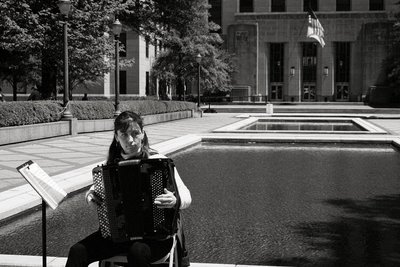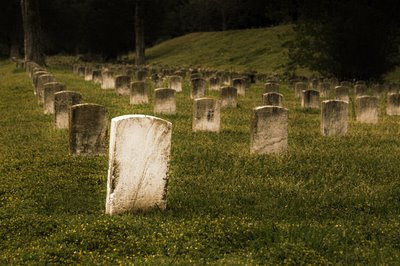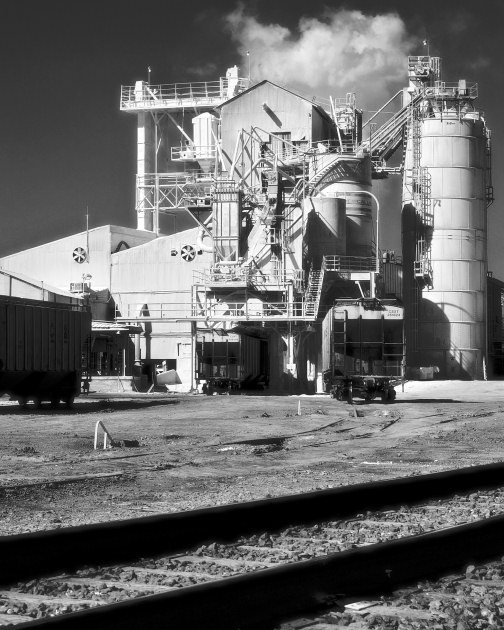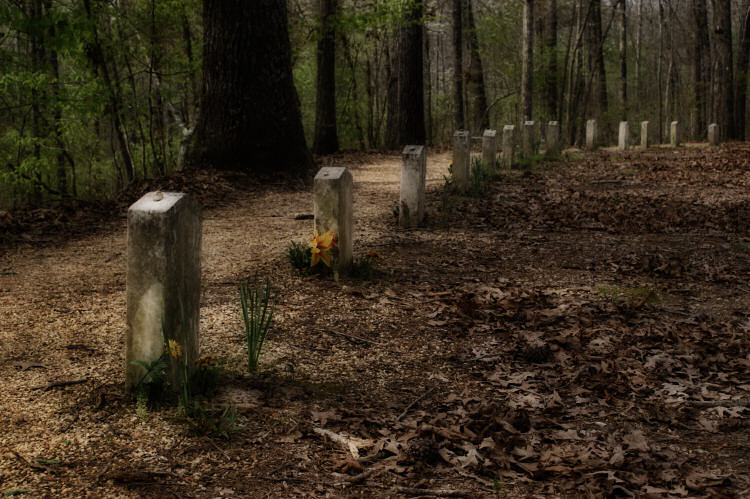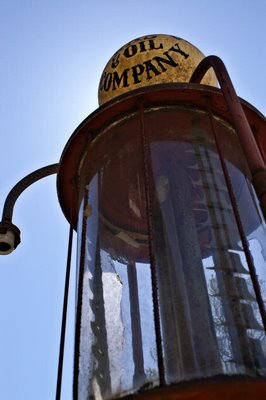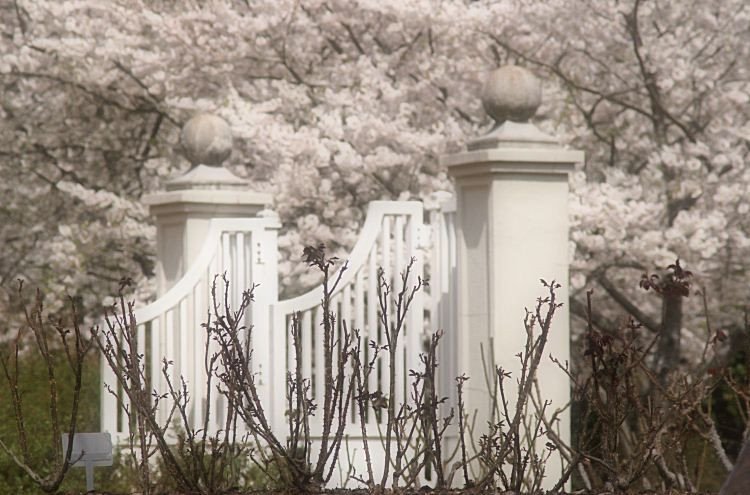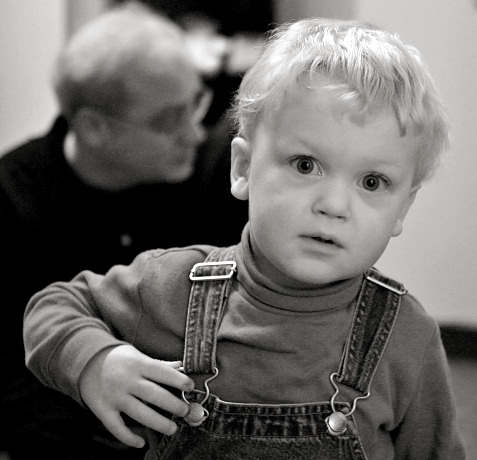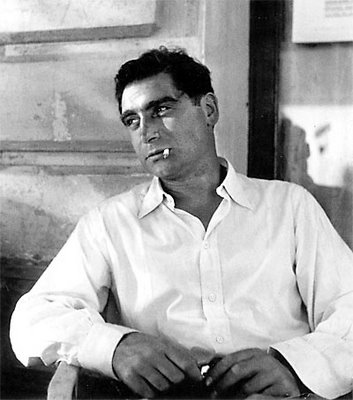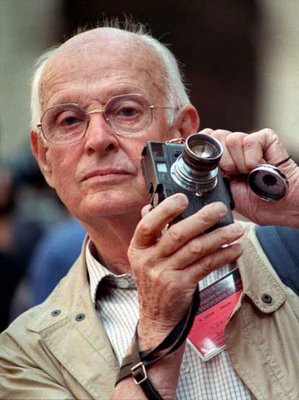Variable Focus
VARIABLE: Able or apt to vary...subject to variation or changes... characterized by variations...not true to type... FOCUS: A point at which rays converge or from which they diverge...adjustment for distinct vision...a center of activity, attraction, or attention...a point of concentration...
Sunday, April 30, 2006
Saturday, April 29, 2006
Friday, April 28, 2006
Thursday, April 27, 2006
Marion Post Wolcott
From the archives of the Farm Security Administration:
Dear Roy:
It gives me pleasure to give this note of introduction to Marion Post because I know her work well. She is a young photographer of considerable experience who has made a number of very good photographs on social themes in the South and elsewhere…I feel that if you have any place for a conscientious and talented photographer, you will do well to give her an opportunity.
Paul Strand 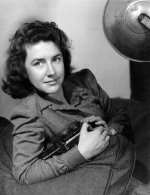 Marion Post was 29 years old when, on the basis of her portfolio and a letter of recommendation from Paul Strand, she was hired by Roy Stryker as one of the Farm Security Administration photographers. Although she also made photographs in other parts of the
Marion Post was 29 years old when, on the basis of her portfolio and a letter of recommendation from Paul Strand, she was hired by Roy Stryker as one of the Farm Security Administration photographers. Although she also made photographs in other parts of the
However, the color photographs extracted from government archives and published in the book Bound for Glory, show that she was also adept working in full color.
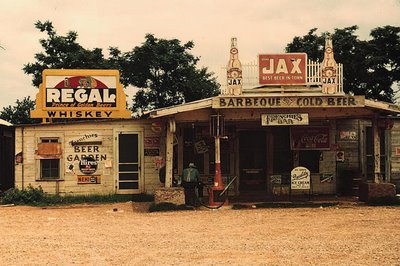
Marion Post Wolcott's work would be impressive under any circumstances, but it is all the more remarkable to think of her, a young woman traveling alone by automobile in the late 1930s, making photographs during daylight hours, processing film, cataloging and writing captions in the evenings.
That she was very much on her own is illustrated in part by excerpts of her letter of appointment from FSA head Stryker:
You will start at $2300 a year, with $5 a day expenses for the time you are in the field….You will receive 4 ½ cents a mile when you travel in your own car….We supply you with film, flashbulbs, and some equipment. If you desire a special camera, or cameras, I am afraid you will have to supply it at the present time….It is our desire to standardize as far as possible on the Leica Contax, and 3-1/4 x 4-1/4 Speed Graphic….
By all accounts, the attractive Miss Post was energetic, independent and strong-willed enough to handle the job. She described her job prior to the Farm Security Administration work:
When I took the FSA job, I already had battle scars. I had weathered…the first weeks as a female full-time staff photographer on the Philadelphia Evening Bulletin…The ten male photographers with whom I was to work, immediately put out their cigarette butts in my developer, spit in and hypoed it, probably peed in it; threw spit balls into my cubby-hole darkroom until my aim and speed became better than theirs. Finally, I exploded—telling them I was there to stay…I told them how and when I could be very useful to them, and that I needed their help in return; that they could teach me about a Speed Graphic and how to develop and print for a newspaper, that they could openly use their accustomed language and the four-letter words which I’d heard and used, and would welcome the opportunity to feel free to use them myself, again. That did it; we reached a truce…soon each one confidentially telling me that the others were wolves and he was going to be my protector.

Wednesday, April 26, 2006
Bound for Glory

Tuesday, April 25, 2006
Monday, April 24, 2006
Sunday, April 23, 2006
Saturday, April 22, 2006
Friday, April 21, 2006
Thursday, April 20, 2006
Wednesday, April 19, 2006
Tuesday, April 18, 2006
Photographers speak...
Monday, April 17, 2006
Sunday, April 16, 2006
Saturday, April 15, 2006
Friday, April 14, 2006
Thursday, April 13, 2006
Wednesday, April 12, 2006
Days of Heaven


"Days of Heaven's'' great photography has also generated a mystery. The credit for cinematography goes to the Cuban Nestor Almendros, who won an Oscar for the film; "Days of Heaven'' established him in America, where he went on to great success. Then there is a small credit at the end: "Additional photography by Haskell Wexler.'' Wexler, too, is one of the greatest of all cinematographers. That credit has always rankled him, and he once sent me a letter in which he described sitting in a theater with a stopwatch to prove that more than half of the footage was shot by him. The reason he didn't get top billing is a story of personal and studio politics, but the fact remains that between them these two great cinematographers created a film whose look remains unmistakably in the memory.

In one memorable shot during the film, men walk through a field that is infested with locusts. As they move through the frame they appear to stir the locusts that fly up from the ground and swirl around them. Actors and actresses are notoriously temperamental, and rather than deal with the additional headache of getting thousands of locusts to perform on cue, Malick solved the logistical problem in an ingenious way. He had peanut shells dropped from a helicopter while the actors walked backwards through the field. When the direction of the film was reversed for playback, the "locusts" performed perfectly. Such is movie magic.
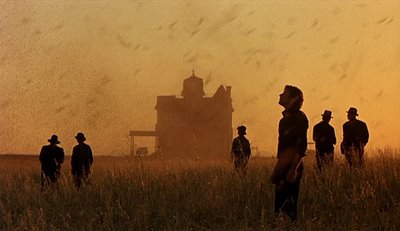
Tuesday, April 11, 2006
Monday, April 10, 2006
Sunday, April 09, 2006
Saturday, April 08, 2006
Friday, April 07, 2006
Thursday, April 06, 2006
Wednesday, April 05, 2006
Tuesday, April 04, 2006
Monday, April 03, 2006
A photo-a-day with Capa and Cartier-Bresson
Today's headline is a bit of a stretch because, of course, Robert Capa and Henri Cartier-Bresson are not making photographs these days. However, Magnum, the photo agency they co-founded in 1947 has an agreement to post a photograph on-line every day at Slate magazine. The feature, Today's Pictures, displays single photos from the Magnum archives. Slate also provides links to Magnum in Motion, slideshows with audio commentary.
Magnum Photos site









